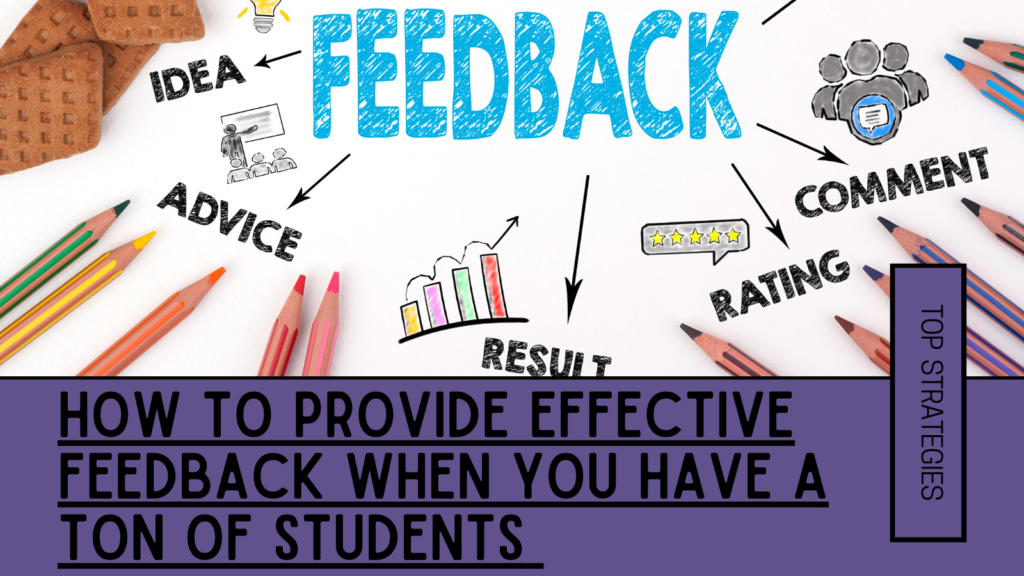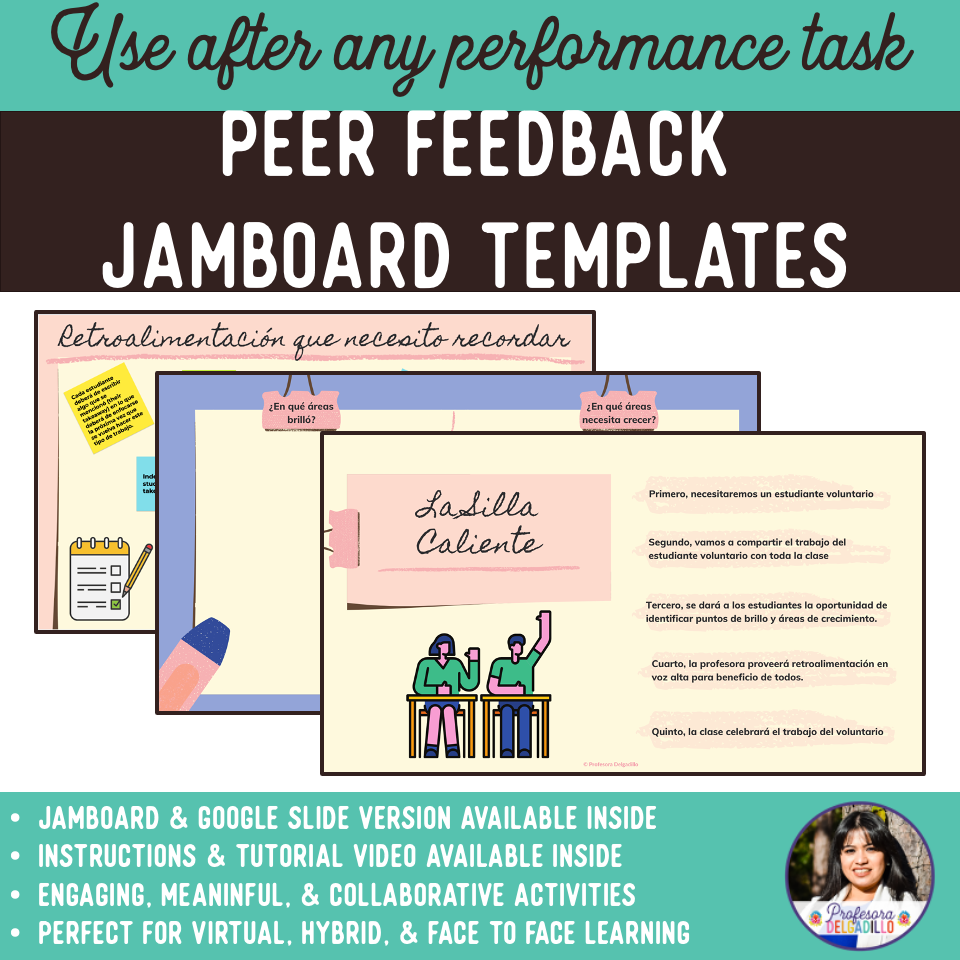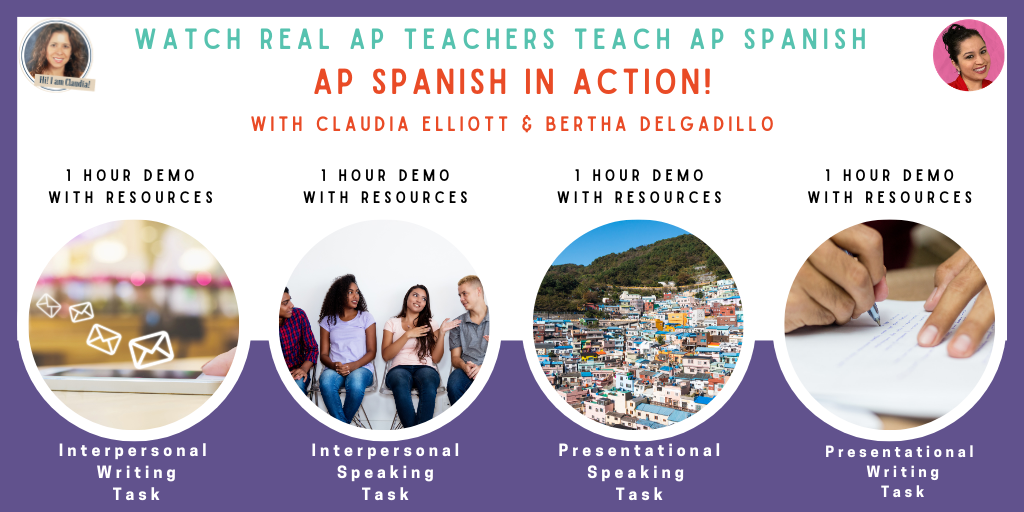As a teacher (especially an AP and/or IB teacher), you know the key role feedback plays in taking a student’s results to the next level.
In order to the feedback to have a profound effect, it must meet certain criteria.
Feedback must be:
- Timely
- Actionable
- Ongoing
Of course there are more characteristics that define effective feedback but today, I will focus on these three and I will share with you a powerful activity I conduct in my classroom that allows me to provide this type of feedback effortlessly and my students enjoy it soooooooo much. Not only that, they grow from it each time we engage in this activity and it strengthens our community.
Now, back to these three elements of feedback.
Feedback should be timely
How many times have you spent hours writing feedback on your students’ work? How many times have you witnessed said students place these document on the trash? Not all students are like that, some really do value feedback, but I have witnessed this in the past. Some students need to learn how to value feedback and the good news is that we can teach them just that.
Learners cannot value our feedback if we return papers & feedback back more than a few days after they have completed an assessment. It just doesn’t have the same effect according to several studies. Trust me, I have been there many times. I have taught over 120 students on some years, and I know many of you who will be reading this post reach almost the 160 students per year.
But I have more good news: We can make feedback timely & effective very easily. How? Well, it doesn’t have to come from you!!!
Feedback should actionable
Effective feedback should also be goal oriented for learners to be able to appreciate it and make the most from it.
This will also increase the motivation of receiving it & applying it in future assignments.
We must be able to provide constructive dialogue that our students can understand and write on paper, so that they can reference next time they are engaged on a similar assessment.
See the examples in the images below listed as EJEMPLO.
Feedback should be ongoing
Effective feedback for students should not only happen after assessments. It should be happening inside our world language courses everyday. Every exchange is an opportunity for our students to take their skills to the next level. Students can achieve that a lot more confidently when we provide effective feedback.
In fact, we can find creative ways to embed it throughout our lessons.
Today, I am sharing with you a technique I use with my all my classes, but it shines the most with my AP class.
La Silla Caliente - A simple & powerful feedback activity
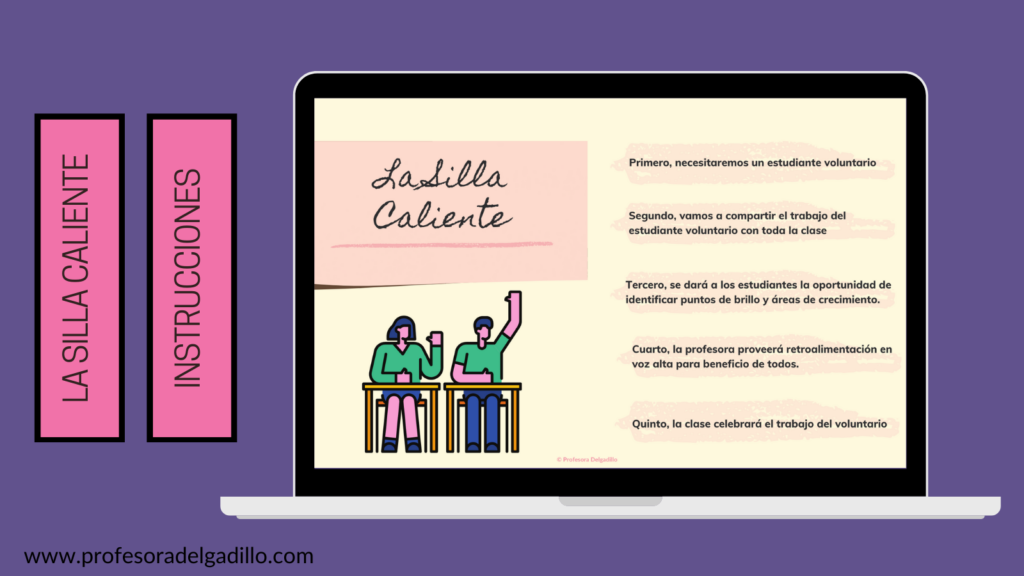
The steps to set this up are simple.
You can start this activity any time after a formative or summative task has been completed. In fact, this could be your opening activity the next day if an assessment took all class period!
- You will tell students that you need a volunteer to be in the hot seat to receive the best personalized feedback ever (because it truly will be). This is also a great opportunity to highlight the value of feedback if this is the first time you are doing this using La Silla Caliente.
- Second, you will play the speaking sample or project a paragraph/page/essay (I do essays by chunks: only focusing on the intro/ body paragraph 1, conclusion – never the entire essay cause it gets too long). You can project the file or an image of it.
- Third, you will give students the time to read & inspect (on their own) or listen to the speaking sample (together).
- Then, you will give students the opportunity to provide constructive and actionable feedback to the student who volunteer by having students type their responses on a Silla Caliente Jam or Google slides. If this is the first time you facilitate this, please model the type of feedback they should be giving. For example, they should be mindful of the language they are using. Students should aim their feedback toward the task in general and not the student volunteer.
- Now, it is your turn as the facilitator and instructor to provide any feedback that will be goal oriented that was missed by your class. Don’t forget to start by praising your class on a job extremely well done before providing your feedback. Sometimes I start by saying “I notice two feedback points that haven’t been mentioned,” then you can pause to give students the opportunity to think further and try to see if they can pin point these “missing” feedback points. It can get so suspenseful! Try it! If the students can’t get it, then spill the tea.
Always end La Silla Caliente feedback session with lots of praise for the student who volunteered. Everyone must clap and celebrate. After all, this student will be able to make major gains and everyone else too!
EXTENSION ACTIVITY IDEA – You can also have students identify & record on their notebooks feedback that was said that they need to focus on for their next (name of the task).
Again, this powerful strategy works beautifully for AP classes but you can use it for ALL levels. I would say the only prerequisite to conduct this activity would be for learners to be aware of the task criteria and performance indicators they are trying to reach.
The End Result:
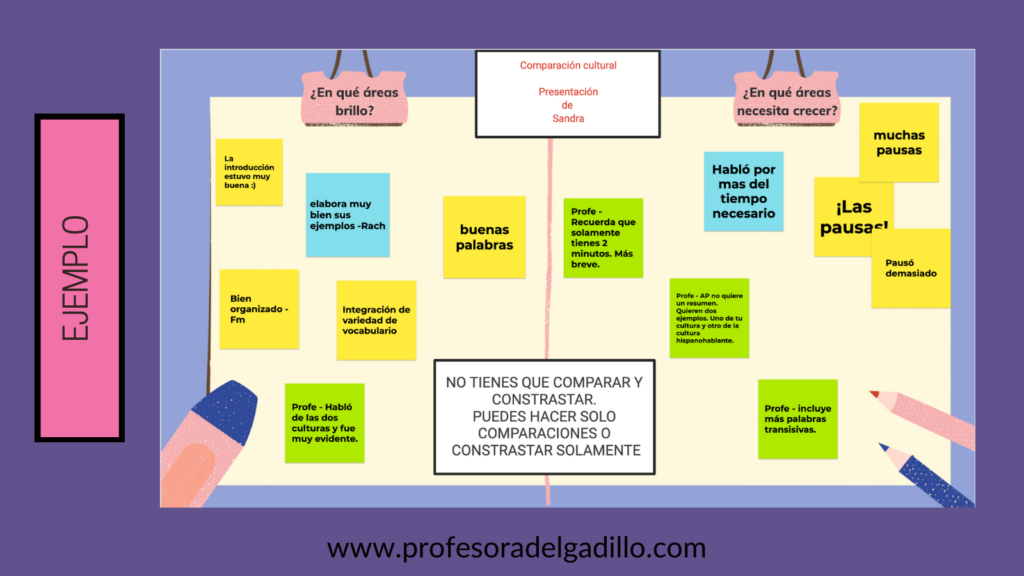
With La Silla Caliente, you will have a meaningful class activity at any time. I have a feeling your administration will absolutely love to see you conduct this activity!
Your students will also develop major Social Emotional Learning Skills such as self awareness and better decision making while identifying strong and weak points on themselves and others. They will also develop social awareness on how to articulate, provide, and participate on constructive feedback & dialogue.
This activity is mighty powerful for many reasons:
- It puts the students at the center.
- It allows for very personalized feedback
- It places all the responsibility back on the student.
- It provides for timely, ongoing, and actionable feedback opportunity.
- It creates a stronger class community.
- It respects everyone’s voice but you must lead by example and model.
- It allows for more appreciation of feedback because it comes from their peers.
- It focuses on the task process and not on the grade.
- Your role is to facilitate this activity and at the end provide any feedback that is constructive but hasn’t yet been stated by students. When it comes to feedback for an AP task, this also allows you to see what parts of the criteria they have already internalized, and what parts need to be brought to the surface by you. The particular example on the image above is based on the speaking cultural comparison sample by one of my students.
It is very easy to set this activity up using Jamboard or Google Slides, but if you want to save that energy, you can grab my already made Silla Caliente templates (in Jamboard and Google Slides) at my Tpt Store! As always, thank you for your support of my work.
See AP Strategies in Action!
If you want more than theory and want to see practical teaching strategies in action, then I want to invite you to check out AP Spanish in Action! The only one of its kind AP training. This is a 7 hour session where you’ll be able to see four sixty minutes sessions with real AP students followed by different debriefs sessions that were asked by teachers. Click here if you want to know!

